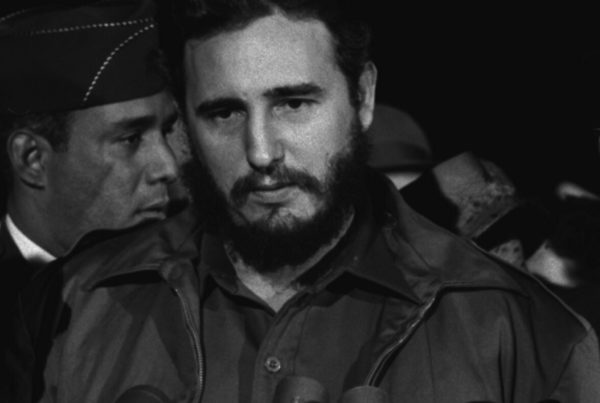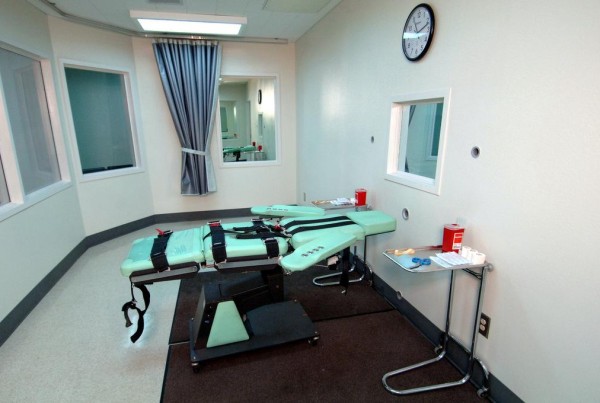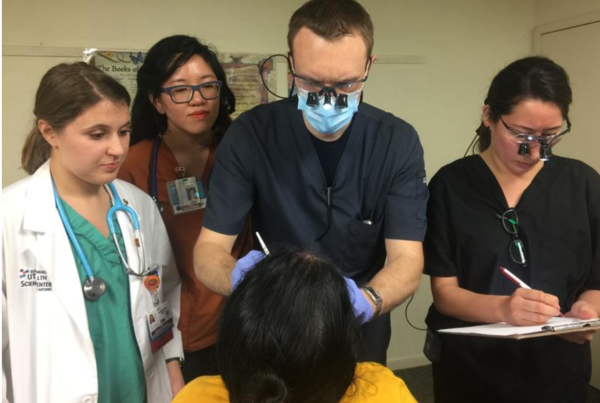Breast milk trades for between $2 and $6 an ounce on websites like OnlytheBreast and on Craigslist. It turns out, while breast milk is free to some babies, it doesn’t come cheap and it’s hard to preserve.
So why is breast milk so expensive? Breast milk does not come from enormous dairy farms.
Moms like National Guard Captain Spires are moved to donate their breast milk for different reasons. In her case, it’s because she’s assisted in one natural disaster too many and has seen other moms lose their entire milk supply.
But keeping her milk coming isn’t always easy.
“I’ve had to pump in Humvees – that was the big one,” Spires says. “Fortunately, my commander above me lets me use her small sleeping tent – but if she was already in bed and I didn’t see that her tent was open, the next place was the Humvee.”
After it’s pumped, donated milk from moms like Spires is shipped to milk banks.
Kim Updegrove with the Mother’s Milk Bank at Austin guides me through the process. She says breast milk is also so expensive because it has to be screened, pasteurized and stored in freezers.
“If we had something that didn’t require refrigeration or freezing, if we had something that was lighter, if we had something that wouldn’t be spilled if it thawed and the container broke – those would all be great things,” Updegrove says.
And there may be that something.
Dr. Blanca Aguilar-Uscanga is a researcher with the University of Guadalajara in Mexico. She specializes in food transformation. She says milk banks in Mexico came to her with the same concerns as those in the U.S.
“El pensaba que se podia hacer alguna tecnologia mejor y yo le dije si – efectivamente – podemos secar la leche.”
“They asked if there was a better technology and I was like – certainly,” Aguilar-Uscanga says in Spanish. “We could dry the milk.”
That means turning it into powder, but not by boiling it until it dehydrates. Instead, scientists would turn breast milk into powder through “spray-drying” – a technique where each drop is sprayed with something that removes excess water but also coats the rest of the contents.
The process is fast, and according to an article published by the Journal of Food Science, spray-drying can be up t0 50 times cheaper than freeze drying.
Powdered milk can be stored at room-temperature, which cuts costs. Aguilar-Uscanga says the technique also preserves nutrients.
“Hicimos muchos estudios con respect a la propiedad de lactoferrina par aver si se perdia y vimos que no … analizamos imunoglobulinas.”
“We ran many studies to figure out if lactoferrines were lost and they weren’t,” Aguilar-Uscanga says. “Then we analyzed for immunoglobulins – and there’s a slight loss there.”
But that’s probably no real concern. In fact, the tomatoes in your ketchup are most likely spray-dried. So is the orange puree in your orange juice.
Mary-Michael Kelley leads HMBANA, the Human Milk Banking Association of North America. It’s the group that sets the standards for milk banks. She says her group is aware of many scientists around the world who are working on different ways to make breast milk more accessible. But she hadn’t heard of spray-drying breast milk.
“I don’t know how it’s processed,” Kelley says. “I don’t know how it’s handled. It’s an interesting concept for sure, but we just know what we do works.”
Aguilar-Uscanga’s powdered milk is out of the lab and in the testing phase. Right now it’s cutting costs in a limited number of hospitals in Guadalajara, Mexico.
















